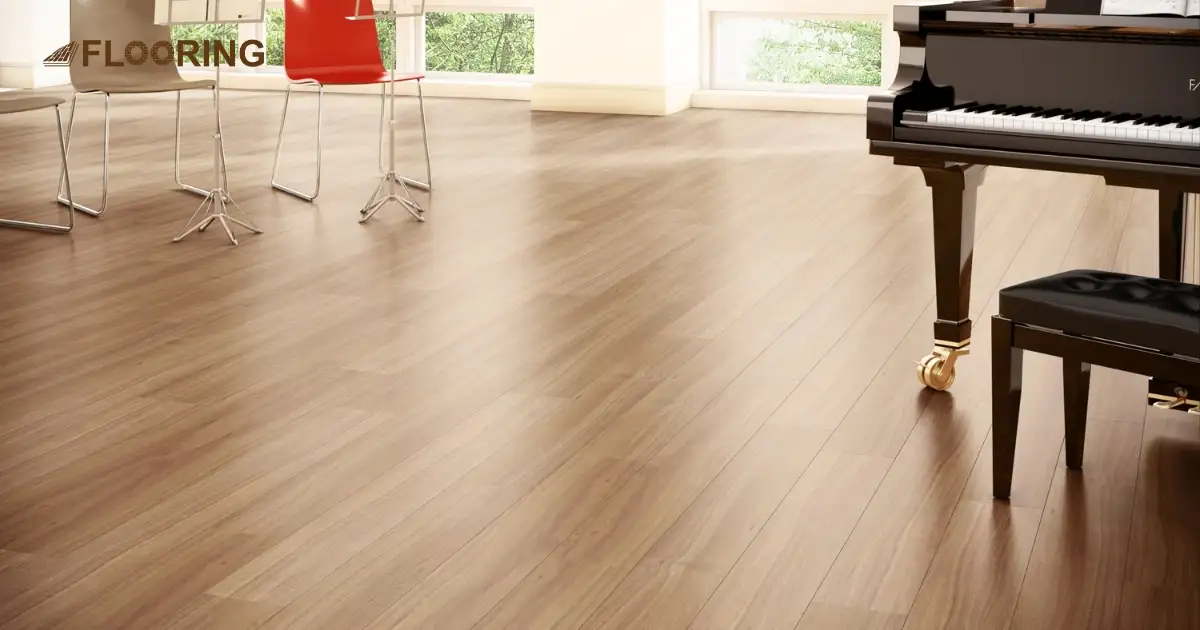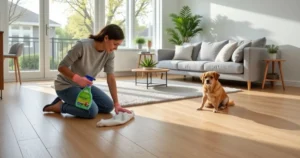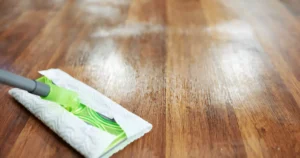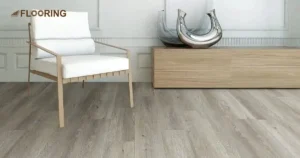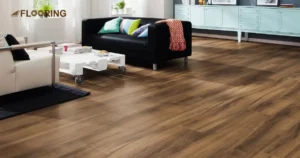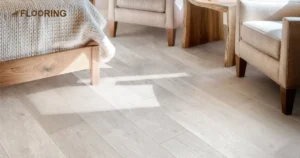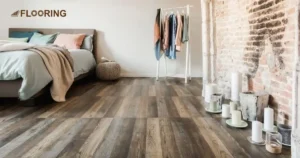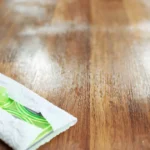Luxury Vinyl Tile (LVT) flooring has become increasingly popular due to its durability, affordability, and versatility. One of the most exciting aspects of LVT is the wide range of color options available.
Table of Contents
From classic neutrals to bold statement hues, LVT offers something for every style and preference. This guide will help you navigate the world of colors of vinyl plank flooring and find the perfect shade for your home or business.
Key Takeaways
- LVT offers a wide range of color options, from classic neutrals to bold hues, suiting every style and space.
- Consider factors like room size, existing decor, and foot traffic when choosing your LVT color.
- Explore popular trends like gray tones and warm woods, but don’t forget to trust your personal preferences.
- Combine different LVT colors to create unique designs, borders, or zone-specific areas in your space.
Understanding LVT Color Categories
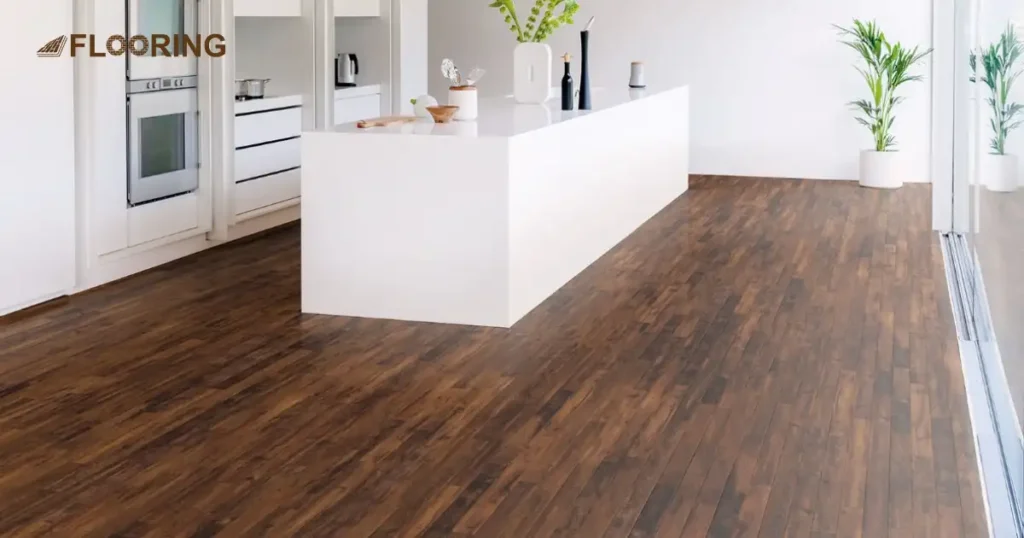
LVT color options can be broadly categorized into several groups. Each category offers unique benefits and can create different atmospheres in your space. Let’s explore these categories and their characteristics:
Neutrals LVT Color Options
Neutral colors are timeless and versatile, making them a popular choice for many homeowners and designers. They include:
- Beige
- Gray
- Taupe
- White
- Cream
Neutral LVT colors provide a clean, sophisticated backdrop that can complement various decor styles. They’re particularly useful in smaller spaces, as they can make rooms appear larger and brighter.
LVT Wood Tones
Wood-look LVT comes in a wide range of colors that mimic natural wood species. Some popular options include:
- Light oak
- Rich mahogany
- Dark walnut
- Weathered gray
- Honey pine
These colors can add warmth and natural beauty to your space while offering the durability and easy maintenance of LVT.
Stone and Tile Looks
LVT can also replicate the appearance of various stone and tile materials. Color options in this category might include:
- Slate gray
- Marble white
- Travertine beige
- Terracotta
- Concrete gray
These colors can create a sophisticated, high-end look in your space without the cost and maintenance requirements of real stone or tile.
Bold and Vibrant LVT Colors
For those looking to make a statement, LVT is available in a range of bold and vibrant colors. Some options might include:
- Navy blue
- Forest green
- Burgundy
- Sunny yellow
- Bright orange
These colors can be used to create accent areas or to infuse personality into a space. They’re particularly popular in commercial settings or homes with modern or eclectic decor styles.
Factors to Consider When Choosing LVT Colors
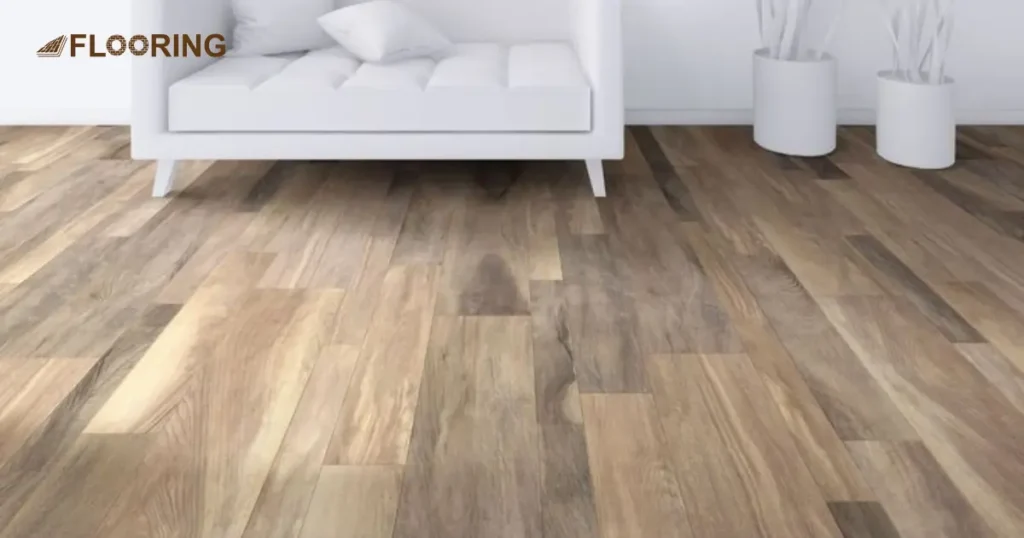
Selecting the right color for your LVT flooring involves more than just personal preference. Several factors can influence how a color will look and perform in your space:
- Room Size and Light: Lighter colors can make small rooms appear larger and brighter, while darker colors can make large rooms feel cozier.
- Existing Decor: Consider the colors of your walls, furniture, and other design elements. Your flooring should complement these existing colors.
- Foot Traffic: Lighter colors may show dirt and wear more easily in high-traffic areas. Darker or multi-toned options might be more forgiving.
- Room Function: The purpose of the room can influence color choice. For example, calming colors might be preferred in bedrooms, while energizing hues could work well in home offices or gyms.
- Maintenance Requirements: Some colors may require more frequent cleaning to maintain their appearance. Consider your lifestyle and cleaning preferences when choosing a color.
Popular LVT Color Trends
While personal preference should guide your color choice, it can be helpful to know current trends in LVP flooring colors. Here are some popular LVT color trends:
- Gray Tones: Gray continues to be a popular choice for its versatility and modern appeal. From light dove gray to deep charcoal, gray LVT can suit various design styles.
- Warm Woods: Warm, honey-toned wood looks are making a comeback, offering a cozy and inviting feel to spaces.
- Whitewashed Looks: Light, airy whitewashed wood-look LVT is popular for creating a beachy or farmhouse-inspired aesthetic.
- Mixed-Width Planks: While not a color trend per se, using planks of varying widths in complementary colors can create visual interest.
- Bold Geometrics: In commercial spaces, bold geometric patterns in contrasting colors are gaining popularity for creating eye-catching floors.
Color Psychology in Flooring
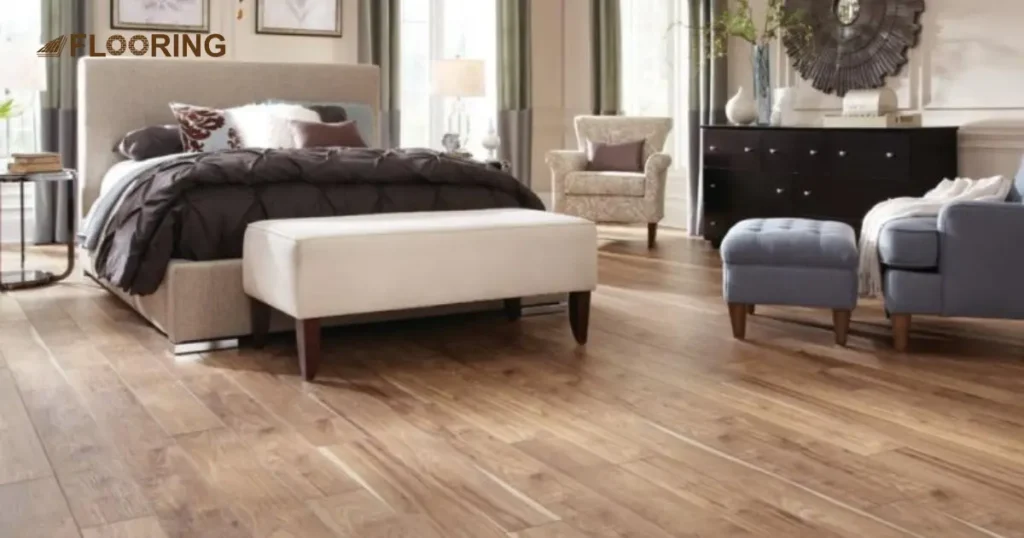
The colors we surround ourselves with can have a significant impact on our mood and behavior. This concept, known as color psychology, can be applied to flooring choices as well. Here’s how different colors might affect the atmosphere of a room:
| Color | Psychological Effect |
| Blue | Calm, relaxing, promotes focus |
| Green | Natural, balanced, refreshing |
| Yellow | Energetic, cheerful, stimulating |
| Red | Exciting, passionate, can increase appetite |
| Purple | Luxurious, creative, mysterious |
| Brown | Warm, grounding, natural |
| Gray | Neutral, sophisticated, calming |
| White | Clean, spacious, pure |
Understanding these psychological effects can help you choose an LVT color that not only looks good but also creates the desired atmosphere in your space.
Combining LVT Colors
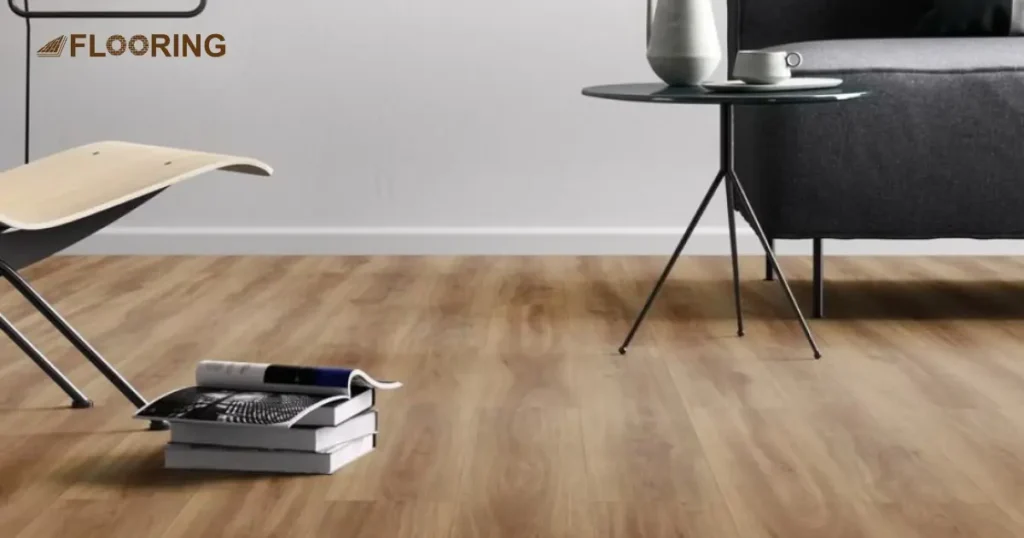
One of the advantages of LVT is the ability to combine different colors and patterns to create unique designs. Here are some ways to mix and match LVT colors:
- Borders and Inlays: Use contrasting colors to create borders around rooms or inlays in larger spaces.
- Patterns: Create geometric patterns or designs using different colored LVT planks or tiles.
- Zoning: Use different colors to define separate areas in open-plan spaces.
- Gradient Effects: Gradually transition from one color to another across a space for a unique ombre effect.
When combining colors, it’s important to consider the overall color scheme of your space and ensure that the colors you choose complement each other and your existing decor.
Maintenance Considerations for Different LVT Colors
While LVT is generally low-maintenance, the color you choose can affect how much upkeep is required to keep your floors looking their best. Here are some maintenance considerations for different colors of vinyl flooring:
- Light Colors: May show dirt and stains more easily, requiring more frequent cleaning.
- Dark Colors: It can show dust and pet hair more prominently.
- Multi-toned or Patterned LVT: This can help hide dirt and minor imperfections between cleanings.
- High-Gloss Finishes: It may show scratches more easily, regardless of color.
Regardless of the color you choose, regular sweeping, vacuuming, and occasional damp mopping will help maintain the appearance of your LVT flooring.
Making Your Final Color Decision
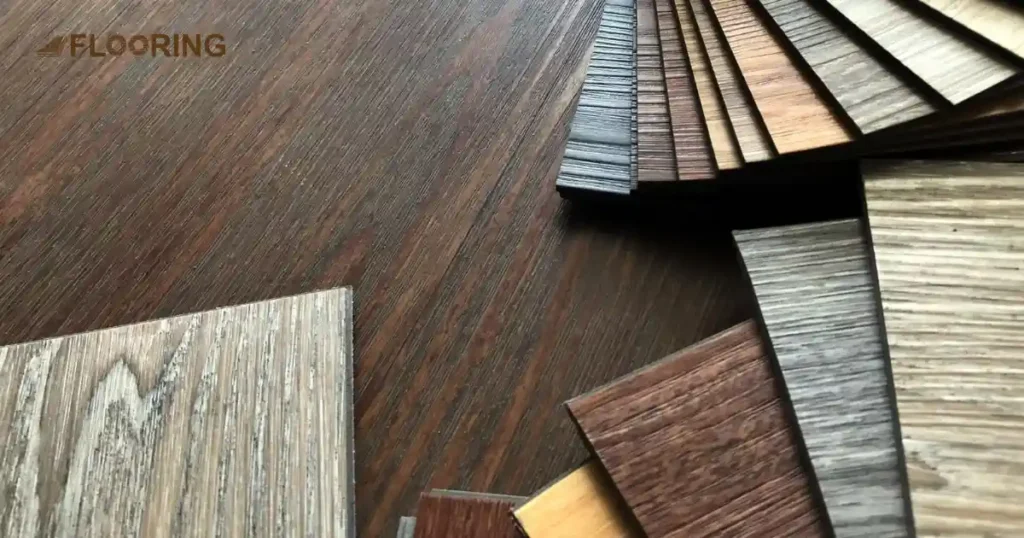
Choosing the right LVT color for your space is a personal decision that depends on various factors. Here are some final tips to help you make your decision:
- Request Samples: Always request samples of your top color choices to see how they look in your space under different lighting conditions.
- Consider Long-Term Appeal: While trendy colors can be exciting, consider how you’ll feel about the color in 5-10 years.
- Seek Professional Advice: If you’re unsure, consult with a flooring professional or interior designer for expert guidance.
- Trust Your Instincts: Ultimately, choose a color that you love and that makes you feel good in your space.
A study by the National Association of Realtors found that new wood flooring was one of the interior projects that appealed most to buyers and had the highest projected return on investment. While this study focused on wood flooring, it suggests that high-quality, attractive flooring like LVT can significantly impact a home’s appeal and value.
Research conducted by Houzz revealed that 69% of homeowners chose wood or wood-look flooring for kitchen renovations, indicating a strong preference for the aesthetic that many LVT options can provide.
By considering these factors and guidelines, you can confidently choose an LVT color that will enhance your space and provide lasting satisfaction. With its durability, versatility, and wide range of color options, LVT flooring offers an excellent solution for creating beautiful and functional floors in any setting.
The Bottom Line
LVT color options offer a world of possibilities for your flooring needs. From timeless neutrals to bold statement hues, there’s something for every style and space. Consider your room’s size, lighting, and existing decor when picking your perfect LVT shade.
Don’t forget to factor in maintenance requirements and long-term appeal. With the right LVT color, you’ll create a stunning foundation for your home or business. Embrace the versatility of LVT and let your creativity shine through your flooring choices. Your ideal LVT color awaits, ready to transform your space into something truly special.
Frequently Asked Questions
How do LVT color options compare to real hardwood or stone flooring?
LVT offers a wider range of color options than natural materials. You’ll find colors that mimic real wood or stone, plus unique hues not available in nature. This versatility allows you to achieve your desired look while enjoying LVT’s durability and easy maintenance.
Can LVT colors affect the resale value of my home?
Neutral LVT colors generally have broader appeal and may positively impact resale value. They create a blank canvas for potential buyers. However, choose colors you love, as you’ll be living with the flooring before selling.
Are there eco-friendly LVT color options available?
Yes, many manufacturers now offer eco-friendly LVT options in various colors. Look for products made with recycled materials or low-VOC inks. These environmentally conscious choices don’t compromise on color variety or quality.
How do I coordinate LVT colors with my existing furniture and decor?
Consider your current color scheme and choose LVT that complements it. Bring home samples to see how they look with your furniture. Don’t be afraid to contrast; a well-chosen LVT color can beautifully offset your existing decor.
Can LVT colors help make a small room appear larger?
Absolutely! Light-colored LVT can make a room feel more spacious and airy. Choose pale neutrals or cool tones to create the illusion of more space. Avoid dark colors in small rooms, as they can make the space feel cramped.
